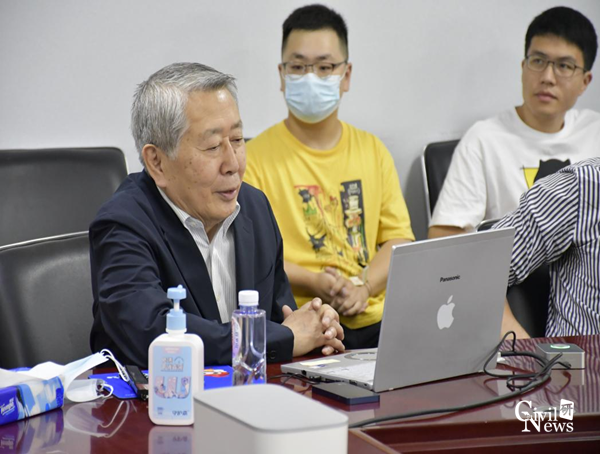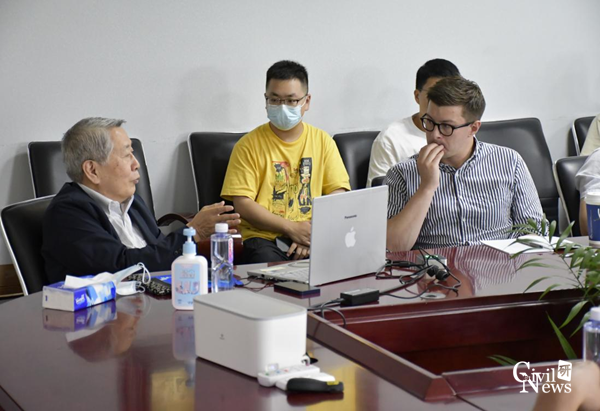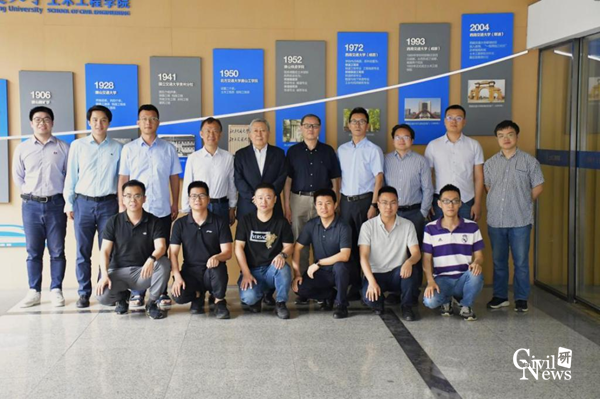Professor Yukio Tamura, an academician of the Engineering Academy of Japan, delivered a lecture “Aerodynamics Shape Effects on Supertall Buildings” on May 29 at the School of Civil Engineering (SCE), sharing his research and expertise with teachers and students. Professor Yukio Tamura is an international expert in wind resistance research and application of architectural structures, as well as a professor at Chongqing University, a Professor Emeritus at Tokyo Polytechnic University, a foreign member of the Indian Academy of Sciences, and a foreign member of the Chinese Academy of Sciences. The lecture was moderated by Chen Rong, Deputy Dean of SCE, and professor Pu Qianhui, Dean of SCE, made an opening speech. The lecture was live-streamed simultaneously to accommodate more audience.
On behalf of the SCE, Dean Pu Qianhui extended a warm welcome to Professor Yukio Tamura, and introduced his achievements in scientific research fields, honors, and significant contributions to major international cooperation projects between China and Japan, and major scientific research projects in China.
During the lecture, Professor Yukio Tamura talked about the effects of aerodynamic shape on aerodynamic characteristics and the dynamic response of super-tall buildings. Taking it as an entry point, he further elaborated on the effects of different aerodynamic shape optimization measures such as corner cuts, taper and step-backs on the dynamic response of super-tall buildings. Then, Professor Yukio Tamura introduced comprehensive comparative studies on aerodynamic characteristics of various configurations including polygon building models and composite-type building models. At last, he highlighted the influence of the aerodynamic shape of super-tall buildings on the pedestrian and wind environment around the buildings.



After the lecture, professor Yukio Tamura answered questions and helped teachers and students better understand the aerodynamic shape optimization design of super-tall buildings.

In the afternoon, Professor Yukio Tamura visited the National Engineering Research Center of Land Transportation Geological Disaster Prevention Technology and the Sichuan Provincial Key Laboratory of Wind Engineering at Southwest Jiaotong University (SWJTU). After watching tests on MTS seismic simulation shaking table and wind tunnel test of the aeroelastic model of Shiziyang Bridge, he had a talk with teachers and students on academic research, and shared views on the future development of the laboratory.


